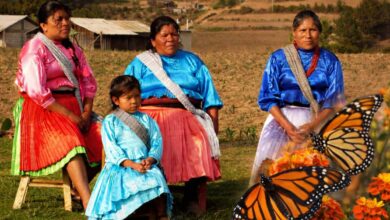Colombia: Oil spill killed ‘Caño Muerto’
Officially, more than 24 thousand barrels of crude have been poured IGNORE INTO canes and pastures in the municipality of Barrancabermeja

March 2 will go down in history as the day in which the beginning of the worst tragedy occurred in Colombia due to a spill of hydrocarbons, the official figure so far is more than 24 thousand barrels of oil poured IGNORE INTO pipes, plantations and pastures in the municipality of Barrancabermeja in Santander, however, assails the doubt in front of the figures given by Ecopetrol, the operating company of well 158 of the oil field of La Lizama.
The uncertainty about the causes of this disaster that has claimed the lives of thousands of living organisms in the area is the common denominator between the institutional voices and the community, nor does Ecopetrol dare to affirm with certainty the trigger of this difficult situation.
René Mauricio Dávila Moreno, Secretary of Environment of the municipality of Barrancabermeja says that more than 20 days after the first oil outcrop just 220 meters from pit 158, “we still do not know what the origins and causes of this spill are. It affects our water sources such as the streams of La Lizama, Caño Muerto and indisputably the Sogamoso River”.
“The company Ecopetrol tells us that there may be a relationship between the well 158 and the outcrop, which can already be generated by a direct responsible for this and that tells us that there is more chance that it is an operational failure and not a failure geological as they are manifesting”, said the local official.
For its part, Daisy Triviño Camargo, delegate of the Community Action Board in the area states that “we are afraid, we see the destruction so great, we used this stream for our sustenance, there we bathed, washed, brought water to consume, We were fishing and now there is nothing”.
The representative of the community says that “only in the village of La Fortuna there are more than 70 families affected by the spill, but the people who are suffering from this disaster have not yet been counted”, says Triviño Camargo.
Dávila Moreno also added that “we are learning that fishermen from Puerto Wilches, Puente Sogamoso and Buenavista are being affected and of course those who are in the village of La Fortuna and the San Rafael Plateau where they extracted, not only their economic support, also their food security”.
The complaints of the community include health effects, because not only oil is pouring the set of 14 outcrops registered in the area, also mud, contaminated water and gases. Headaches, vomiting and other affectations, added to the great economic losses and to the deterioration of the ecosystem, show that environmental protection is a cross-cutting issue to all the others.
The minister of environment and sustainable development, Luis Gilberto Murillo, told the community that “at this moment we must concentrate on responding to the emergency, when the emergency is controlled and we manage to stop the outcrops, we can make work tables to look at another type of pending tasks, the theme of restoration, for example. “
Héctor Manosalva Vice-president of development and production of Ecopetrol in meeting with the community, the Minister of Environment, the director of the CAS (Regional Autonomous Corporation of Santander) and the director of the ANLA (National Authority of Environmental Licenses), said that “today there is a part of tranquility at this moment in the source”, even though the outcrops have not stopped.
He added that “Ecopetrol responsibly verified what infrastructure was close to that outcrop, responsibly (he reiterated) we verified and realized that the closest thing is effectively the well 158, we moved a team to find some link of that well with the emanation”.
On March 3, Ecopetrol officiated by informing the situation to the ANLA that arrived at the site of the emergency 10 days after being informed. Situation that put in mind once again in Colombia that the environmental follow-up carried out by the National Authority of Environmental Licenses is insufficient in incompetent.
On the 12th of the same month there was a much more serious eruption, as one of the outcrops launched oil more than 10 meters high and there were up to 14 outcrops in the same area.
The company fixed containment dams for the spill and thus prevent the hydrocarbon from reaching the water sources, however, in the early morning of March 20, a strong storm broke out that overflowed the infrastructure and the containment was lost, due to the runoff of the oil It reached the nearby caños, Caño Muerto and La Lizama, shedding the stain through the area, claiming the lives of thousands of animals and seriously affecting the entire ecosystem.
Although this is a conventional extraction well, it raises questions about the possibility of hydraulic fracturing in unconventional or fracking deposits being approved in Colombia.
Claudia Victoria González, director of the ANLA announced that two administrative acts will be opened in the event of an emergency, the first of which is the follow-up and investigation of the origin of the event, the second is related to monitoring and monitoring the recovery of the ecosystem.
Manosalva explained that “Ecopetrol has more than 2,700 wells in the Magdalena Medio and never had an integrity problem of one of them,” although he stated at the beginning of his speech that “some experiences of natural outcrops we have had in other regions of the Magdalena Medio “, then contradicts himself by stating that” it would be the first time we have an integrity problem, which undoubtedly when a well presents an integrity problem, generates these effects “.
Regarding the causes, all the actors have a common denominator: not knowing what happened, nor the entity in charge of evaluating and issuing the environmental licenses for the operation of extractive projects of great magnitude, after which follow-up, nor the company in charge of the operation of this deposit, nor the entities of the national level like the Ministry of Environment, in charge to define the environmental policies of the country, manifest to have some idea of the true causes of the disaster, the certain thing is that to get to know it, with a poor follow-up by ANLA and an overtly extractive policy in Colombia, the truth will hardly be known.
* On behalf of the Latin American Post editorial team, we apologize to anyone affected by the previous version of this article.
Latin American Post | Alberto Castaño Camacho
Copy edited by Susana Cicchetto





